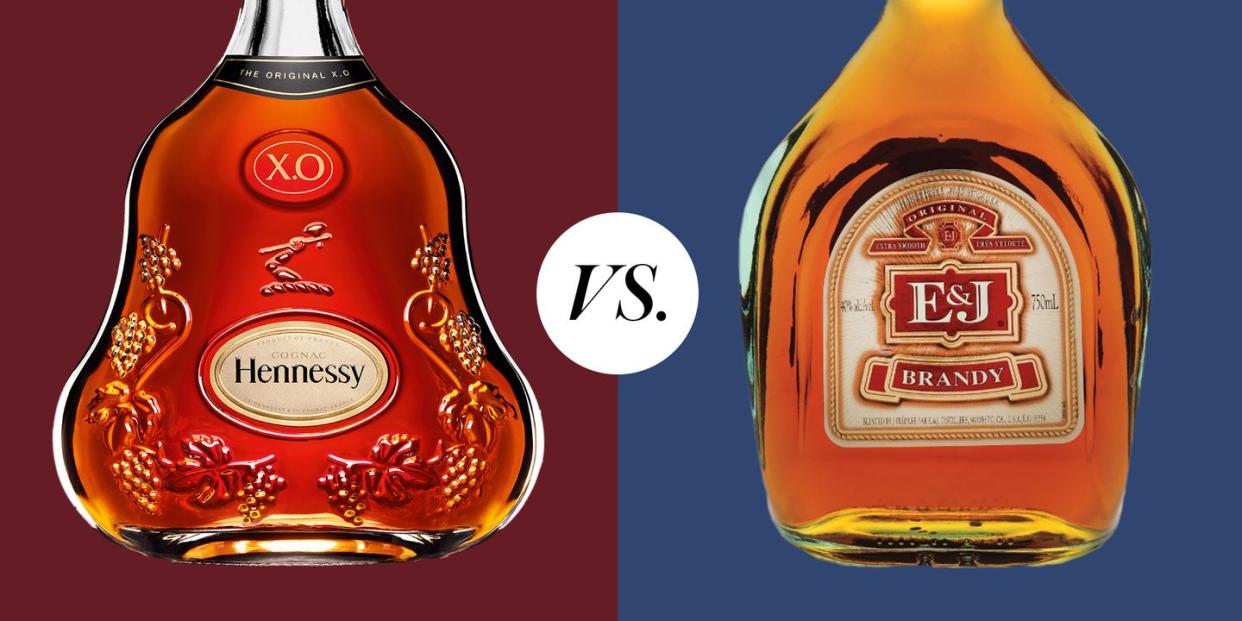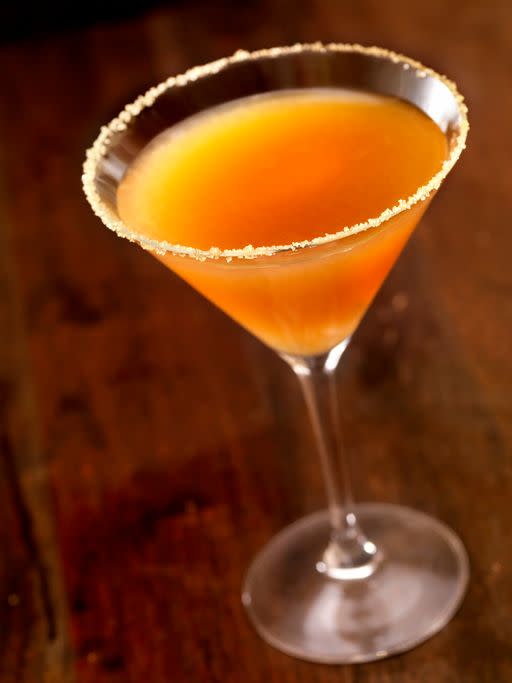What's the Difference Between Cognac and Brandy?

Victor Hugo called cognac the "liquor of the gods." It's become known as a symbol of French luxury, the best brandy money can buy—because, yes, cognac is a brandy. But just as not all wine is champagne, there are plenty of details that set cognac apart from other types of brandy. Still confused? Don't worry, here's everything you need to know about the difference between brandy and cognac—and how best to enjoy each of them.
What is brandy?
Brandy generally refers to a distilled spirit made from fermented fruit juice. It can be produced using grapes or other types of fruit, such as apples. Calvados, pisco, armagnac, and applejack are all types of brandy. Unlike cognac, brandy can be made anywhere in the world.
What is cognac?
While cognac is a type of brandy, to earn the designation, the spirit must meet certain specific criteria. Named for the region where it's produced (just like champagne) cognac must be made in the state of Charente in the Cognac region of France, and be made from white grapes from one of six different terroirs; the Ugni Blanc grape variety is its primary ingredient, and grapes from "Grande Champagne" terroir are the most coveted.
After distillation, the liquid is blended and aged, which is what really makes cognac special. At Hennessy, for example, a tasting committee of 7 people meets from 11 a.m. to 1 p.m. to taste about 40 different samples of "eaux de vie," as the individual distilled spirits are known before blending. It takes 10 years of training before one can join the committee, according to the brand's ambassador Jordan Bushell.
What do V.S. and V.S.O.P. mean?
Cognac must be aged for at least 2 years in French oak, at which point it's labeled "V.S. (Very Special)." After that, these distinctions that break down a bottle's age and quality:
V.S.O.P. (Very Superior Old Pale): the youngest brandy in the blend must be aged at least four years in oak
X.O. (Extra Old): the youngest brandy in the blend must be aged at least six years in oak. It is sometimes listed as Napoleon rather than X.O.
How should you drink them?
Sipping a glass of cognac—especially a V.S.O.P. or X.O.—by the fire on a cold winter night is the stereotypical image of the liquor, but it belies its versatility and suitability for mixed drinks. The Sidecar, for example, is a classic cocktail that uses cognac as its primary ingredient.

Here's how to make it:
Ingredients
1.5 oz cognac
.75 oz lemon juice
.75 oz Cointreau/triple sec
Instructions
Combine ingredients in a cocktail shake. Fill with ice. Shake well and strain into cocktail glass with a sugared rim.
Brandy, of course, can also be sipped neat or in cocktails (the Jack Rose is among the most popular).
Sipping cognac and brandy straight might give flavors of fruits like apricots, oranges, and lemons. Aged cognacs typically add notes of flowers and spices like nutmeg and cinnamon.
Which ones should you buy?
There's a wealth of good brandy and cognac on the market today. Here are some of the most popular and recognizable bottles to add to your bar cart.
Cognac
Brandy
You Might Also Like


